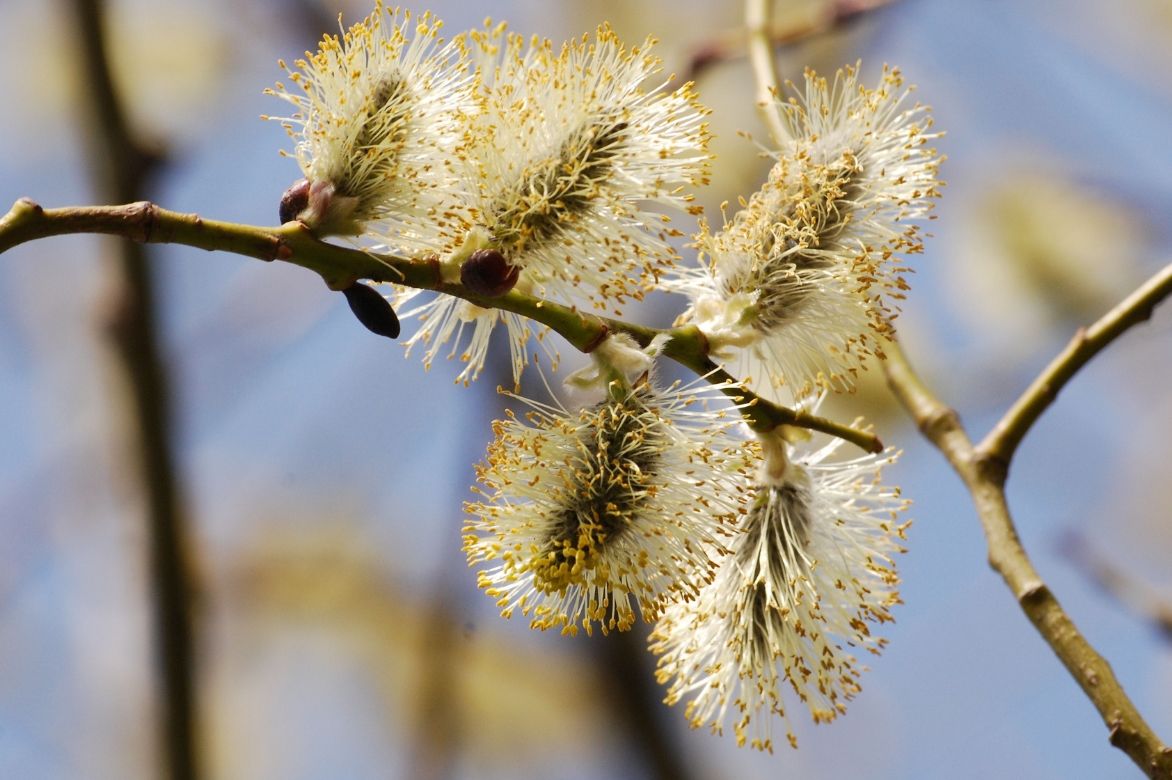

Salix artica Yalta - Saule arctique
Salix arctica Yalta - Willow
Salix arctica Yalta ®
Arctic Willow
Special offer!
Receive a €20 voucher for any order over €90 (excluding delivery costs, credit notes, and plastic-free options)!
1- Add your favorite plants to your cart.
2- Once you have reached €90, confirm your order (you can even choose the delivery date!).
3- As soon as your order is shipped, you will receive an email containing your voucher code, valid for 3 months (90 days).
Your voucher is unique and can only be used once, for any order with a minimum value of €20, excluding delivery costs.
Can be combined with other current offers, non-divisible and non-refundable.
Why not try an alternative variety in stock?
View all →This plant carries a 24 months recovery warranty
More information
We guarantee the quality of our plants for a full growing cycle, and will replace at our expense any plant that fails to recover under normal climatic and planting conditions.
Would this plant suit my garden?
Set up your Plantfit profile →
Description
Salix artica 'Yalta' is a variety of Willow that is absolutely delightful. With its miniature size and small green leaves, it goes unnoticed for most of the year but when its catkins appear, they attract all the attention. Red and pink and clearly visible among the emerging young shoots, they provoke astonishment and admiration. Growing slowly, it reaches about 1 m (3ft) in 10 years, making it easy to cultivate in a container. In the garden, it can be placed at the edge of a flower bed, exposed to the sun. Hardy and easy to grow in most soils.
Salix artica belongs to the family Salicaceae, which historically included only Willows and Poplars, but now, according to botanical classification, comprises 55 genera, most of which are completely unknown, except perhaps Azara, Idesia (I. polycarpa) with its beautiful heart-shaped leaves) and Poliothyrsis (editor's note: more interesting for its rarity than its ornamental interest, from what I have seen in my own garden). There are many species of Willows (over 350) as well as numerous ornamental cultivars with decorative leaves, flowers, or wood. Salix artica is a deciduous botanical species native to the area surrounding the Arctic Ocean, hence its species name. It is a miniature plant (15-20 cm (6-8in)), extremely cold-resistant, and very slow-growing. However, it has a good lifespan for a Willow.
The cultivar Yalta is slightly more vigorous than the species, while remaining very compact, reaching a maximum of 1 m (3ft) in all directions in 10 years. It is therefore a slow-growing plant that can easily be kept in a container even without pruning! In March, when the leaves are just beginning to appear, it forms magnificent catkins about 3 cm (1in) long, clearly visible on the still almost bare wood and with the young leaves, which are a beautiful tender green. These elongated red catkins are adorned with pink stamens with yellow markings, each resembling a precious and intricate jewel. Yalta is undoubtedly one of the most beautiful Willows with decorative catkins, along with the Salix chaenomeloides Mount Aso and one or two others. It even has the luxury of flowering again in some summers, producing reddish-brown catkins that are slightly less aesthetic, but quite surprising for this time of year.
This miniature Willow has well-proportioned leaves in relation to its size. Small and egg-shaped, they measure only 2.5 cm (1in) long and 1 cm (1/2 in) wide. They are a beautiful, healthy, bright green.
Easy to grow, it is very hardy and grows in full sun in most ordinary, rather moist soils. It requires no maintenance, unless you want to shape it into a perfect ball like a topiary (in fact, this variety is also available on the market as a half-standard, giving it a somewhat artificial appearance, although its overall look allows it to blend into a natural garden...).
This small, easy-to-grow bush will be perfect planted in a container on a terrace. You can create a miniature scene by mixing different types of plants alongside it. Hellebores will provide winter or early blooms that will beautifully complement Yalta's catkins, with so many varieties available in a wide range of colours... You can also plant a lovely dwarf conifer in its company. A dwarf Spruce like the Picea abies Little Gem, which forms a very low cushion with green foliage and light green young shoots, will provide greenery in winter. And why not add some bulbs like charming Snowdrops with their white bell-shaped flowers, heralding the arrival of spring?
Plant habit
Flowering
Foliage
Botanical data
Salix
arctica
Yalta ®
Salicaceae
Arctic Willow
Cultivar or hybrid
Other Willow - Salix
View all →Planting and care
Salix artica 'Yalta' is best planted in the autumn, from September to November, in any deep, moist, rich, and well-drained soil. It is indifferent to the nature of the soil. Choose a location with a very sunny exposure. Dig a hole 40 cm (16in) in all directions and mix compost with the existing soil (1/3 compost - 2/3 soil in humus-rich soil, the opposite in sandy soil). Soak the root ball in a bucket for fifteen minutes to completely saturate it. Position the root ball in the hole, backfill, and water well.
Planting period
Intended location
Care
Planting & care advice
This item has not been reviewed yet - be the first to leave a review about it.
Similar products
Haven't found what you were looking for?
Hardiness is the lowest winter temperature a plant can endure without suffering serious damage or even dying. However, hardiness is affected by location (a sheltered area, such as a patio), protection (winter cover) and soil type (hardiness is improved by well-drained soil).

Photo Sharing Terms & Conditions
In order to encourage gardeners to interact and share their experiences, Promesse de fleurs offers various media enabling content to be uploaded onto its Site - in particular via the ‘Photo sharing’ module.
The User agrees to refrain from:
- Posting any content that is illegal, prejudicial, insulting, racist, inciteful to hatred, revisionist, contrary to public decency, that infringes on privacy or on the privacy rights of third parties, in particular the publicity rights of persons and goods, intellectual property rights, or the right to privacy.
- Submitting content on behalf of a third party;
- Impersonate the identity of a third party and/or publish any personal information about a third party;
In general, the User undertakes to refrain from any unethical behaviour.
All Content (in particular text, comments, files, images, photos, videos, creative works, etc.), which may be subject to property or intellectual property rights, image or other private rights, shall remain the property of the User, subject to the limited rights granted by the terms of the licence granted by Promesse de fleurs as stated below. Users are at liberty to publish or not to publish such Content on the Site, notably via the ‘Photo Sharing’ facility, and accept that this Content shall be made public and freely accessible, notably on the Internet.
Users further acknowledge, undertake to have ,and guarantee that they hold all necessary rights and permissions to publish such material on the Site, in particular with regard to the legislation in force pertaining to any privacy, property, intellectual property, image, or contractual rights, or rights of any other nature. By publishing such Content on the Site, Users acknowledge accepting full liability as publishers of the Content within the meaning of the law, and grant Promesse de fleurs, free of charge, an inclusive, worldwide licence for the said Content for the entire duration of its publication, including all reproduction, representation, up/downloading, displaying, performing, transmission, and storage rights.
Users also grant permission for their name to be linked to the Content and accept that this link may not always be made available.
By engaging in posting material, Users consent to their Content becoming automatically accessible on the Internet, in particular on other sites and/or blogs and/or web pages of the Promesse de fleurs site, including in particular social pages and the Promesse de fleurs catalogue.
Users may secure the removal of entrusted content free of charge by issuing a simple request via our contact form.
The flowering period indicated on our website applies to countries and regions located in USDA zone 8 (France, the United Kingdom, Ireland, the Netherlands, etc.)
It will vary according to where you live:
- In zones 9 to 10 (Italy, Spain, Greece, etc.), flowering will occur about 2 to 4 weeks earlier.
- In zones 6 to 7 (Germany, Poland, Slovenia, and lower mountainous regions), flowering will be delayed by 2 to 3 weeks.
- In zone 5 (Central Europe, Scandinavia), blooming will be delayed by 3 to 5 weeks.
In temperate climates, pruning of spring-flowering shrubs (forsythia, spireas, etc.) should be done just after flowering.
Pruning of summer-flowering shrubs (Indian Lilac, Perovskia, etc.) can be done in winter or spring.
In cold regions as well as with frost-sensitive plants, avoid pruning too early when severe frosts may still occur.
The planting period indicated on our website applies to countries and regions located in USDA zone 8 (France, United Kingdom, Ireland, Netherlands).
It will vary according to where you live:
- In Mediterranean zones (Marseille, Madrid, Milan, etc.), autumn and winter are the best planting periods.
- In continental zones (Strasbourg, Munich, Vienna, etc.), delay planting by 2 to 3 weeks in spring and bring it forward by 2 to 4 weeks in autumn.
- In mountainous regions (the Alps, Pyrenees, Carpathians, etc.), it is best to plant in late spring (May-June) or late summer (August-September).
The harvesting period indicated on our website applies to countries and regions in USDA zone 8 (France, England, Ireland, the Netherlands).
In colder areas (Scandinavia, Poland, Austria...) fruit and vegetable harvests are likely to be delayed by 3-4 weeks.
In warmer areas (Italy, Spain, Greece, etc.), harvesting will probably take place earlier, depending on weather conditions.
The sowing periods indicated on our website apply to countries and regions within USDA Zone 8 (France, UK, Ireland, Netherlands).
In colder areas (Scandinavia, Poland, Austria...), delay any outdoor sowing by 3-4 weeks, or sow under glass.
In warmer climes (Italy, Spain, Greece, etc.), bring outdoor sowing forward by a few weeks.






























































